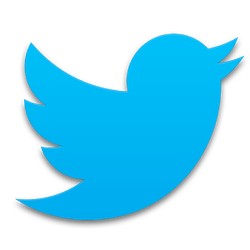 Sitting in a radio studio with a client being interviewed, our host pointed to a box on the wall displaying the words “ON AIR”. He explained that when illuminated with its red backlight, whatever we said in the studio would be broadcast to the nation. We continued with light banter until he called out “on air” and, as the sign lit up, we quickly quietened down and the formal interview began. But the reality is, we are permanently connected – in this switched on world which we inhabit, we are always “ON AIR”. Whatever is posted onto the internet, can live on forever. Once it has been committed to the web, it is public. And even if it is retracted, it remains available. The internet never forgets anything. Even if you delete your post swiftly, someone is likely to haves captured it and it will live on. Posts can be swiftly copied to services like Storify or Chirpstory meaning that deleting them from your timeline doesn’t necessarily remove them from the internet. And, while anything you delete may not appear on your timeline, the items are cached on Google and picked up by other aggregators such as topsy. Freezepage keeps an accurate image of a webpage at a moment in time – ensuring that as pages changes, they can still be recalled as they were.
The increasingly popular Snapchat (especially among the youth), indicates that the pictures sent this way are deleted within 10 seconds. But don’t be fooled. Although the pictures (snaps) and the chats disappear to view, they remain on the internet and on your android phone, albeit hidden from viewand and on your android phone, albeit hidden from view.and on your android phone, albeit hidden from view.and on your android phone, albeit hidden from view.and on your android phone, albeit hidden from view.and on your android phone, albeit hidden from view.and on your android phone, albeit hidden from view. And this issue is not limited to the social media. Last year’s Postmates spat highlights this beautifully. Dissatisfied with Postmates’ service, a client wrote a letter of complaint. At some stage in dealing with the complaint, the CEO outlined a resolution to the customer’s issue, ending it with “Someone also please tell her to f*** off.” Unfortunately for Postmates and its CEO, this line was included in the response to the unhappy client. Closer to home, Primedia may have deleted the controversial clown cartoon, but I bet you have seen it elsewhere. A quick Google search will yield any number of copies of it displayed on the internet. You don’t even need to post something onto the internet yourself. The power of the smartphone means that anyone within earshot or within a line of sight, can broadcast your words and your actions very swiftly. Just ask Charles Saatchi. And we all know that ended in tears. Once stated, your words exist. Once posted to the web, an item exists and removing it does not mean it hasn’t existed. No matter how swiftly you delete, no matter how humbly you apologise, the offending item will persist. It’s better not to post it, say it or do it in the first place. Reputation is everything and you shouldn’t take risks with it. So the bottom line is that you are always “ON AIR”. You can’t escape this and you need to be very aware whenever you post something or say something. It will form a part of your reputation. Forever. What are your thoughts about the need to watch your words and actions?
1 Comment
 By Mel Brooks If you’re on Twitter purely in your personal capacity and for fun, the above question is irrelevant. Your personal “follow back” policy is entirely your choice. For businesses, though, the matter is entirely different. Most businesses, particularly large companies, do not follow back those who follow them. This represents a wasted opportunity – the opportunity to listen to the market. Much is made by marketing specialists of the need to listen to customers. While following back thousands of followers may seem to be unnecessary as it is impossible to read all the tweets on a timeline, it is possible to view a sample of tweets regularly. In so doing, it is then possible to get a feel for the market. It is also important to understand that by following back one is showing respect to customers. The effect that this could have is an important consideration. By following existing and potential customers, an organisation is saying: “We value you; we want to hear you; you are important to us”. Frankly, it can be construed as arrogant not to return a follow. Large corporates are also largely guilty of tweeting a constant stream of commercial messages about their products. Who would listen to a radio station that broadcasts only commercials? In this regard read: Social Media: Content is King. Tweet-schedulers also need to be used with caution. Their use can be obvious to followers and they risk removing the “social”’ element from social media. While they represent an opportunity for cost reduction and assist enormously in managing the time-consuming aspect of running an effective Twitter account, they can reduce the effectiveness of the medium. To get a return it is always best to apply real resources to the medium. Twitter is about relationships and we all know that, to succeed, relationships take real work. A South African business that is getting this right is Nedbank. Not only does the company follow back its followers, but it is responsive and interactive too. You should never remove the human element of social media. What are your thoughts on following back Twitter followers? Do you like it when someone follows you or follows you back? by Mel Brooks
Social media has been a hot topic for a few years now leaving many businesses, large and small, feeling the need to have a presence on social media platforms. And there is a bewildering array of these. To feed this desire, a large phalanx of self-proclaimed “Gurus” has emerged. They use their tweet-scheduling applications to bombard on Twitter to all who follow them – relentlessly. The links in their tweets go to articles they have written, while many of them have the books they have for sale advertised somewhere on the article page. Some also offer training in the use of social media platforms. But what is Business doing in the Social Media arena? Many of the large companies have clearly spent a considerable sum developing their presence on the various platforms. Some of them make very good use of this form of media. I do, however, wonder about those large companies that merely use, for example, Twitter as an extension of their call centres. Twitter allows instant communication with followers and conversely allows their followers to communicate with them. For a follower to then receive a (probably) bot asking the follower to call the call centre number provided somehow takes the “social” out of social media. People want to be heard – not brushed off to some multi-choice menu when they call. Some small businesses fare no better. I have come across many which last tweeted months earlier, which seem to suggest that they have given up on Twitter. The point of Twitter is to communicate – but communication needs to be a two-way process, so real interaction is required. It is not sufficient to continuously tweet about how great a business’s products are, nor to fob the Twitterati off with pre-configured, automated responses. People are using Twitter as a means to connect with people, not bots. For businesses, Twitter content should be managed like a radio station. Who would listen to a radio station that broadcasts only commercials? I suspect that nobody would: content is paramount. What is needed is a series of tweets that inform, entertain and educate followers. These can be interspersed with “commercial” type tweets. So clearly there is a need for the production of good content – and that’s the problem for most businesses. In February 2013, when I took over the Twitter account of one of my clients, part of an international education organisation based in South Africa, the followers had been hovering in the region of 600. Today they have over 44,000 followers, leaving competitors in the dust (at least one account is managed by one the largest advertising agencies in the world) and now exceeding all institutions operating in this space. Why? A major reason lies in the content. Many agencies are engaged to run social media campaigns because they understand the medium, rather than because they understand the business. But this means that content generation is left to someone who does not have the capacity or the knowledge to produce it, let alone to interact with client or potential clients. The result is often a string of commercial messages, leading to follower fatigue. Clearly, the number of followers is not an exclusive measure of a successful Twitter account. It is, nevertheless, a measure. While it is impossible to gauge the quality of followers (from a business perspective), I have learned from experience that behind off-beat noms de plume and cartoon profile pictures, there are real people. And if they are having fun on Twitter, it does not rule them out as potential customers. Just think how many of the people who listen to a radio station advertisement are likely to be good prospects for sales. It’s the classic “numbers game” I have another client who had 246 followers when I took over the account. In 73 days, I built this following to over 2,000. There is no secret recipe – it’s all about content and interaction. Blogging, another valuable medium for communicating with customers and potential customers, is also service that I offer. Screeds have been written about the importance of blogs in driving traffic to websites as well as establishing credibility as an industry player. But, once again, it is the content that makes all the difference. In a blog it is possible to write content that in such a way does not comprise commercial messages but rather give the reader the understanding that the business understands the problems customers experience and suggests solutions – without plugging actual products. If well written, they will generate enquiries for a business. I call this “selling without trying to sell”. It works. There are a number of tweet scheduling applications available. All you have to do is compose the tweets and enter instructions as to when they should be tweeted. Isn’t that great? All you have to do is set it up and you can get on with other things. I don’t use them. This goes to interaction and timing. Imagine your scheduler tweeting away and some major disaster occurs. How many people will even read your tweets, let alone follow any links in them? You will probably irritate a lot of people. You’ll also be amazed at the extent to which Twitter has transcended “working hours”. Late last Saturday night, I wondered whether there was anyone actually out there reading the tweets. A look at the “interactions” page showed me that there were – 90% of the tweets had been retweeted – including some of the “commercials”. Running a client’s Twitter account is an 18-hours-a-day, seven-days-a-week activity. Sure, this does limit the number of clients I can take on, but it gives me the ability to constantly monitor, interact and retweet any good comments that are relevant to a client’s business. And in this era of absolute mobility, I remain connected wherever I am. I am on Twitter @Mel_BrooksSA |
Hot off the press
Economist, data translator, communicator and fascinated by the world around us. Archives
December 2023
Categories
All
|
 RSS Feed
RSS Feed